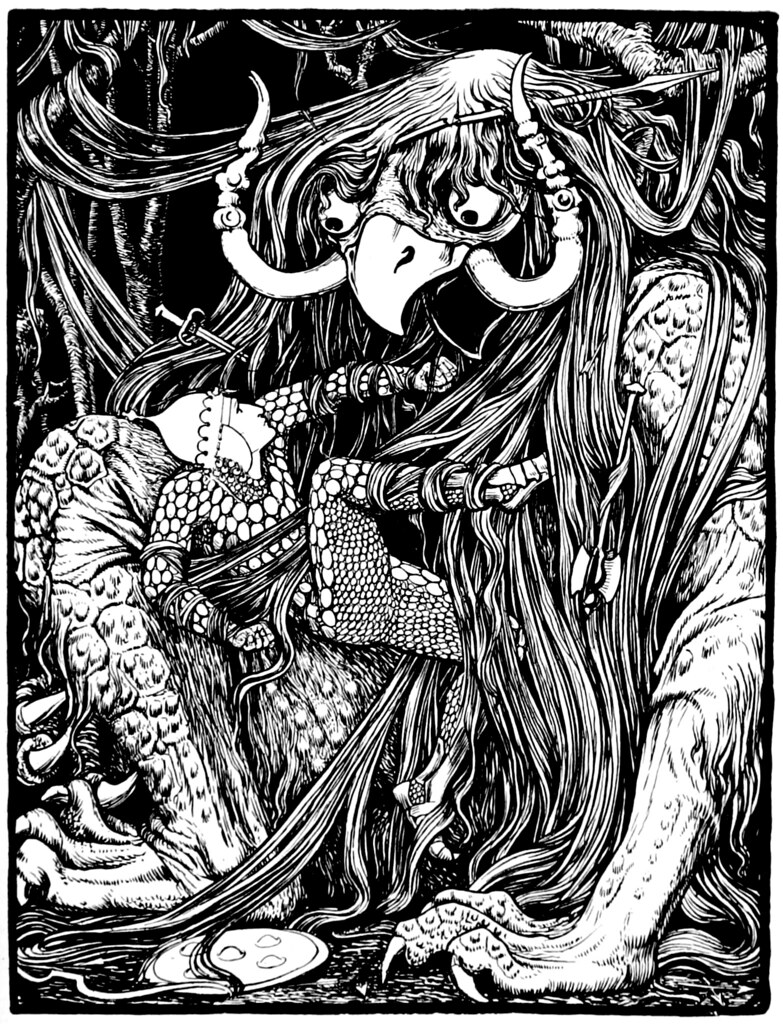 The Demon With The Matted Hair, Illustration from "Indian Fairy Tales," 1892
The Demon With The Matted Hair, Illustration from "Indian Fairy Tales," 1892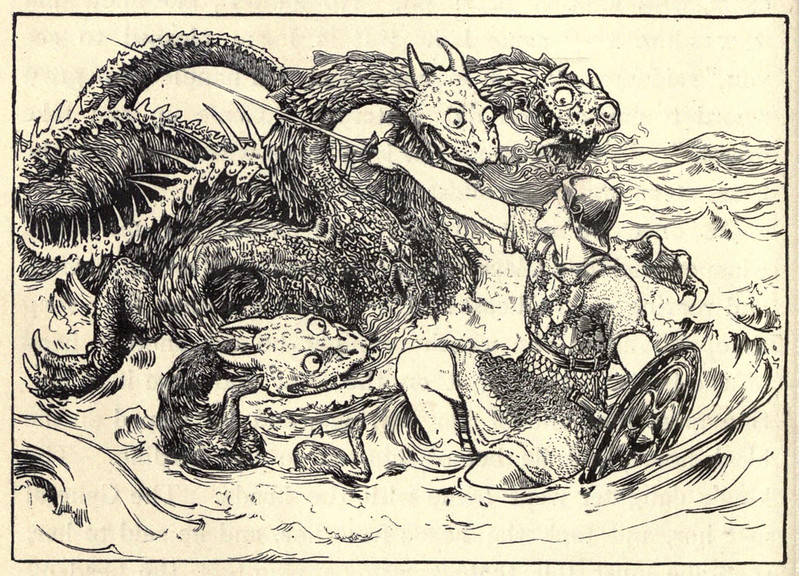 The Sea Maiden, illustration from "Celtic Fairy Tales," 1892
The Sea Maiden, illustration from "Celtic Fairy Tales," 1892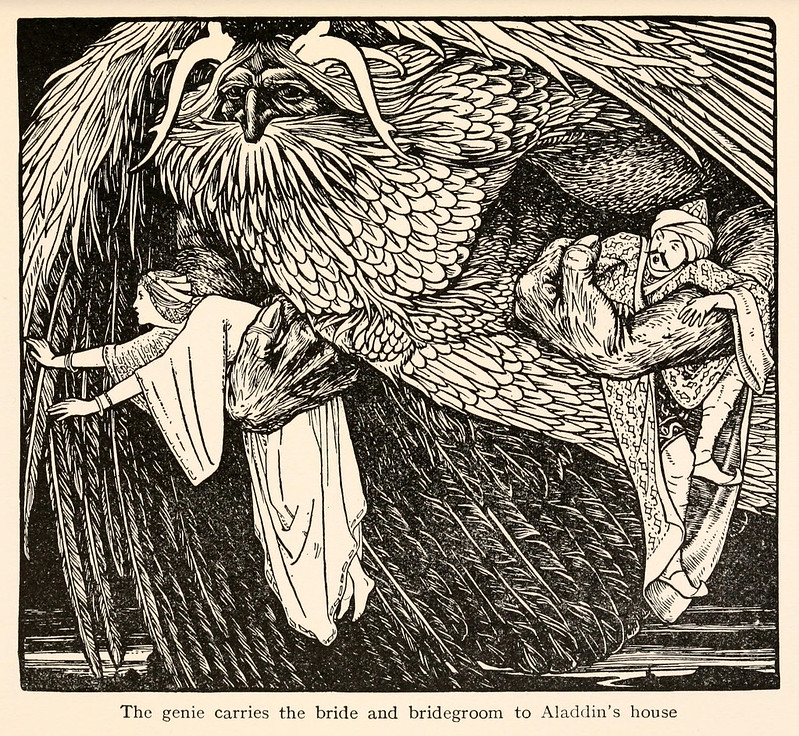 Illustration from The Story Of Aladdin, "Fairy Tales From The Arabian Nights," 1915
Illustration from The Story Of Aladdin, "Fairy Tales From The Arabian Nights," 1915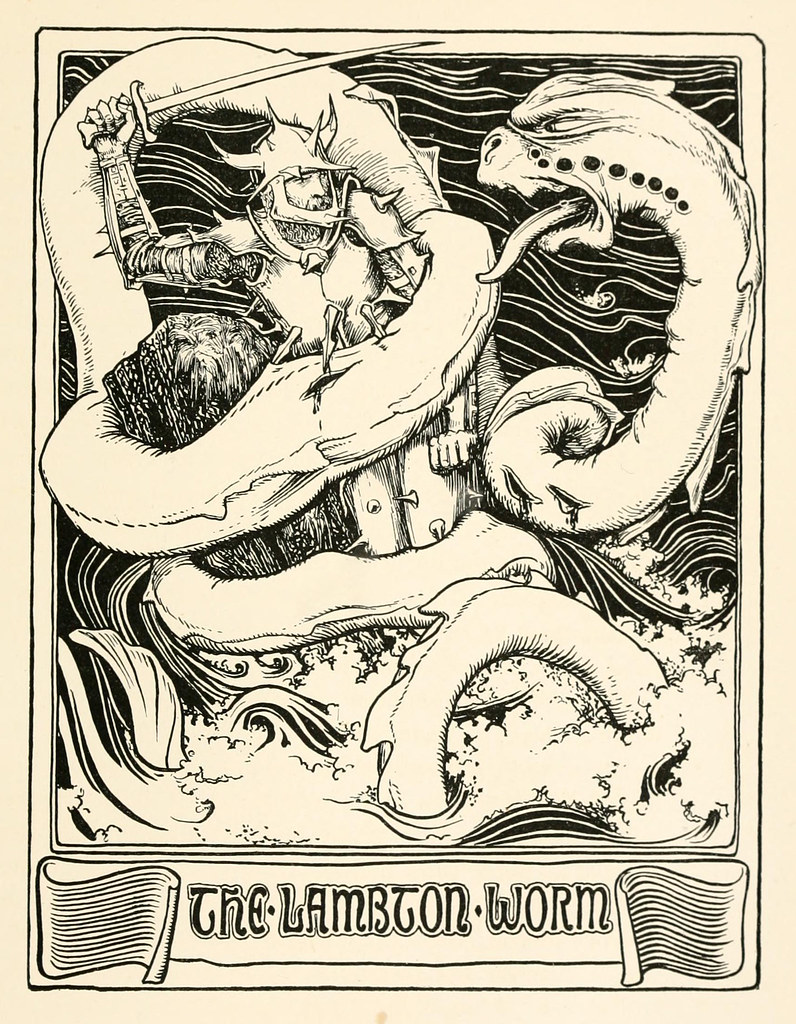 The Lambton Worm, illustration from "More English Fairy Tales" 1894
The Lambton Worm, illustration from "More English Fairy Tales" 1894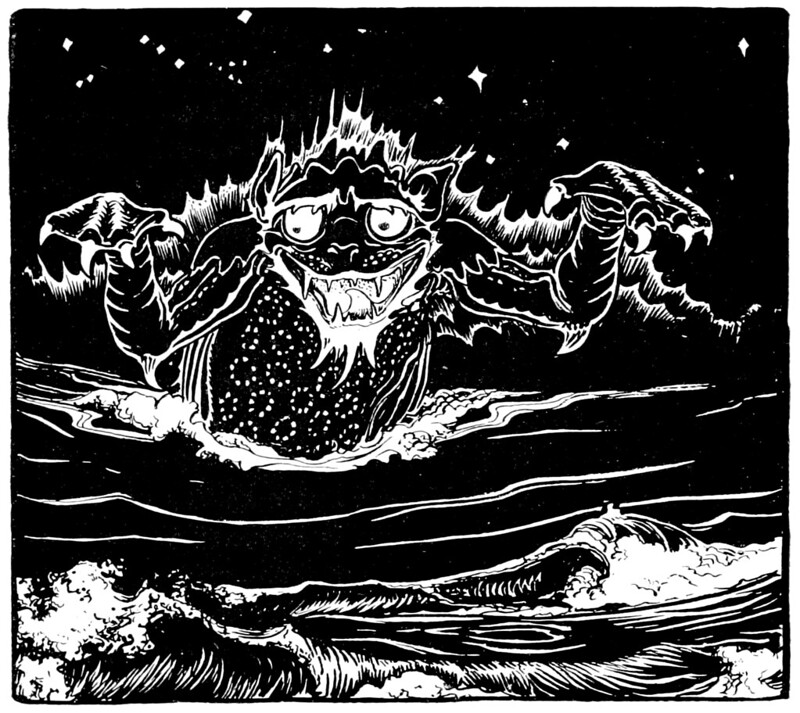 Illustration from "More Celtic Fairy Tales," 1892
Illustration from "More Celtic Fairy Tales," 1892 Connal Yellowclaw, illustration from "Celtic Fairy Tales," 1892
Connal Yellowclaw, illustration from "Celtic Fairy Tales," 1892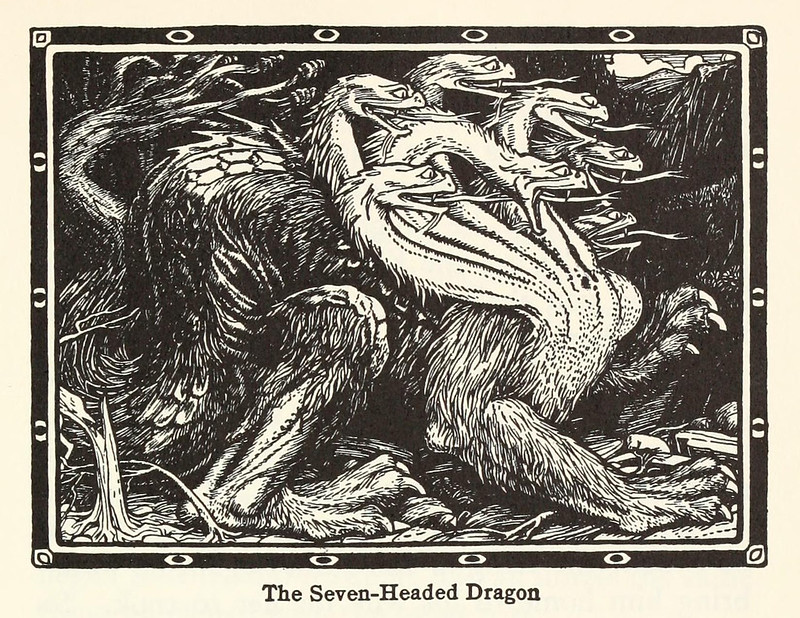 The Seven Headed Dragon, Illustration from "Europa's Fairy Book," 1916
The Seven Headed Dragon, Illustration from "Europa's Fairy Book," 1916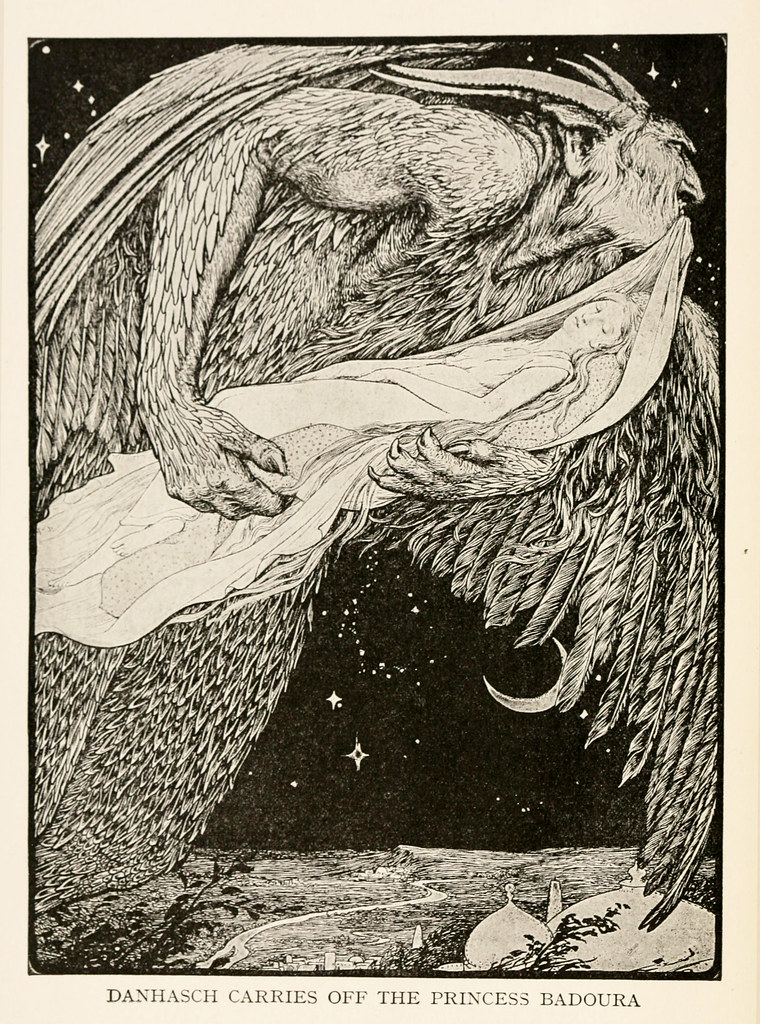 Illustration from Prince Camaralzaman and the Princess of China, "Fairy Tales From The Arabian Nights," 1915
Illustration from Prince Camaralzaman and the Princess of China, "Fairy Tales From The Arabian Nights," 1915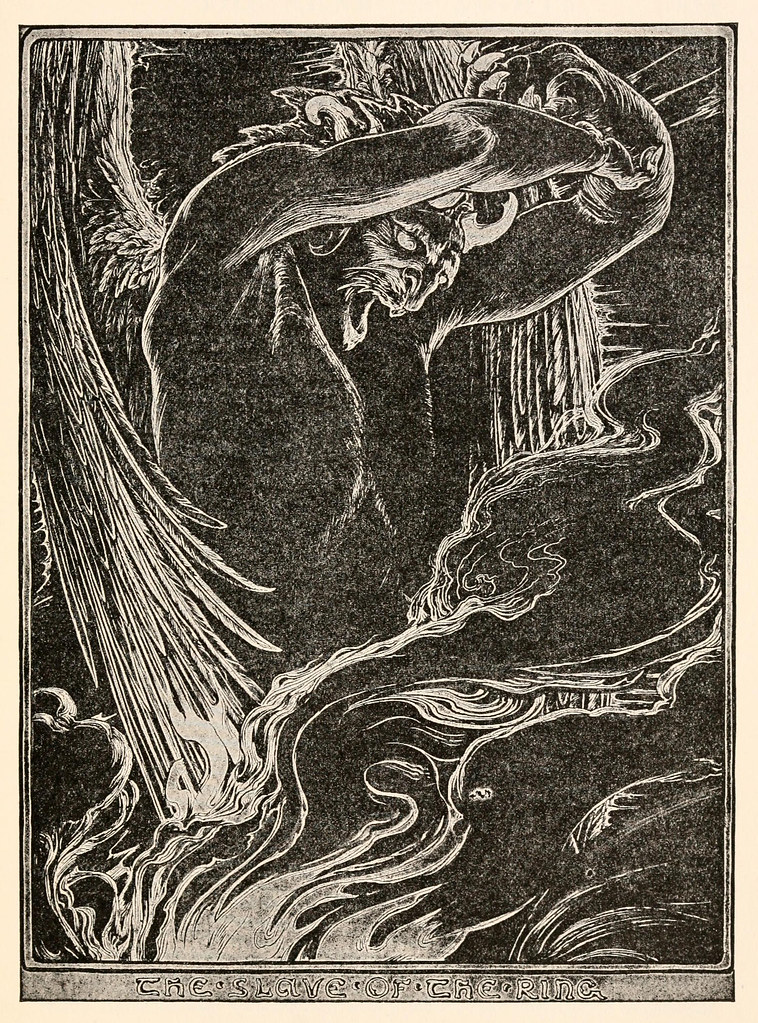 Illustration from The Story Of Aladdin, "Fairy Tales From The Arabian Nights," 1915
Illustration from The Story Of Aladdin, "Fairy Tales From The Arabian Nights," 1915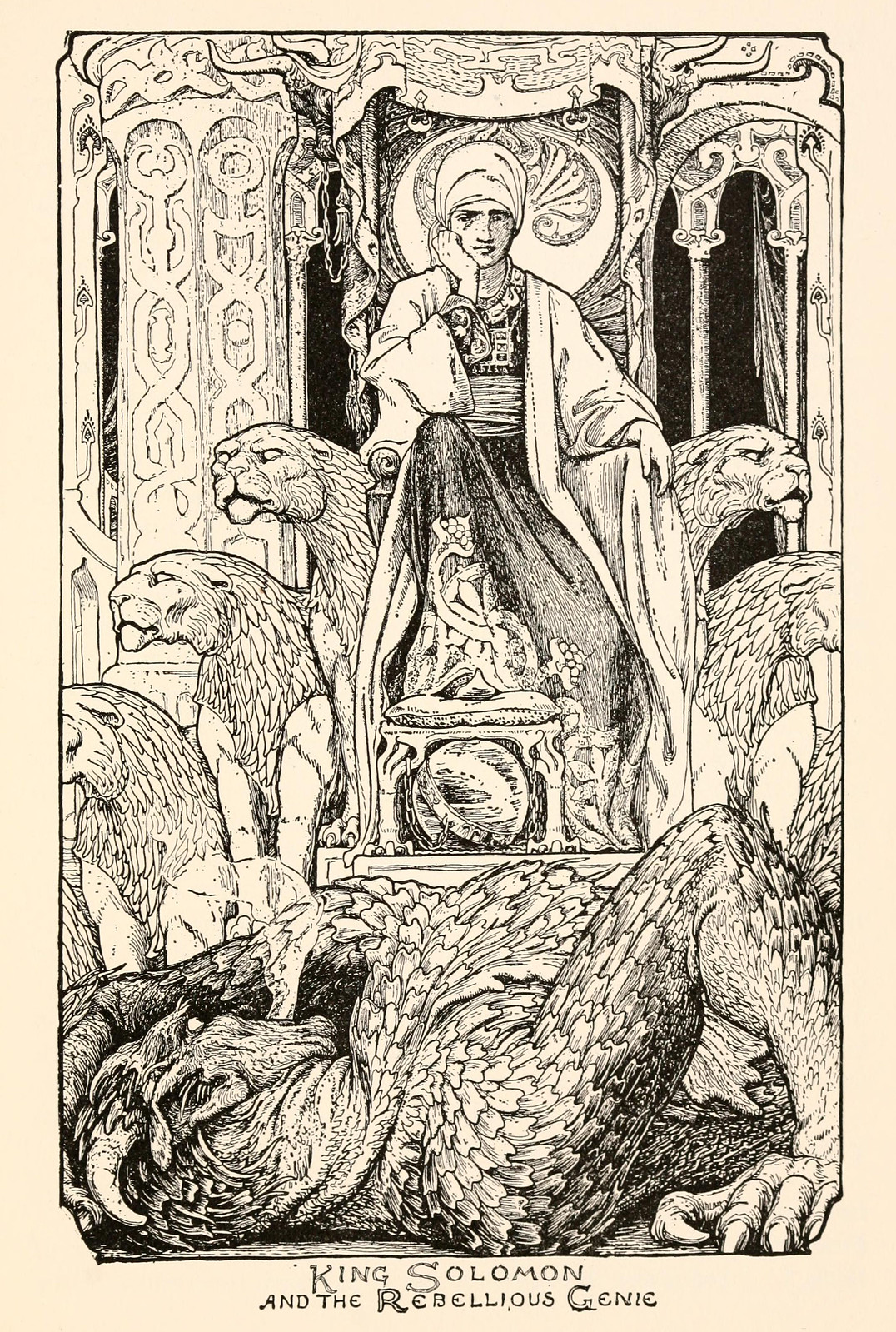 Illustration from The Story Of The Fisherman And Genie, "Fairy Tales From The Arabian Nights," 1915
Illustration from The Story Of The Fisherman And Genie, "Fairy Tales From The Arabian Nights," 1915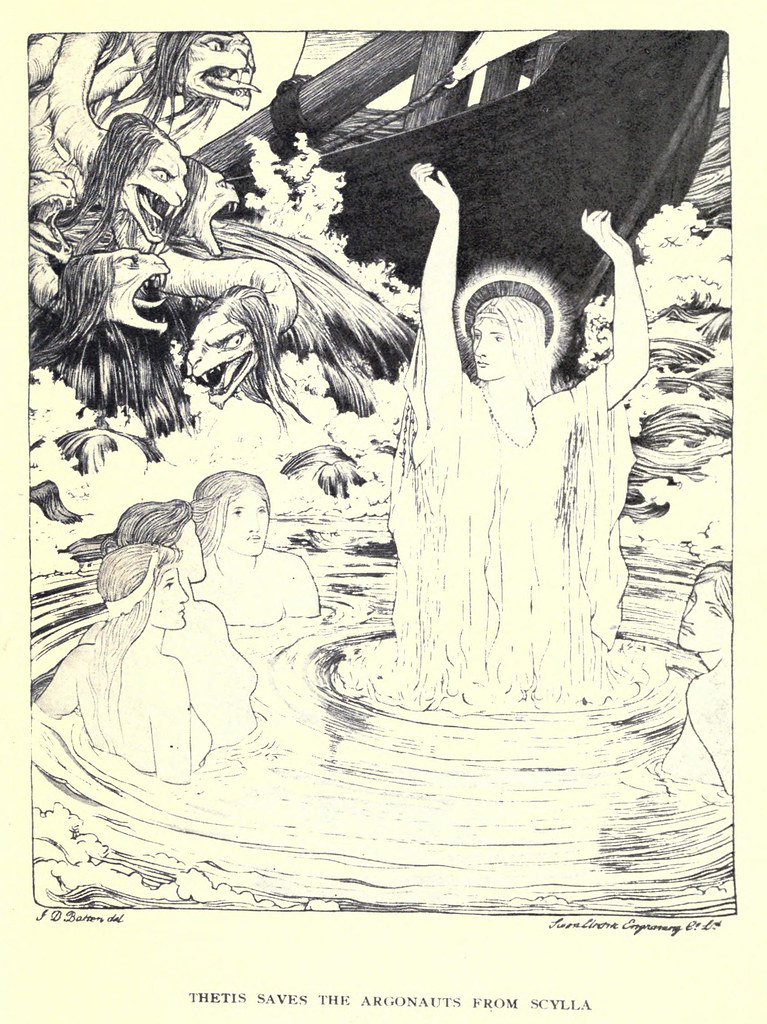 Thetis Saves The Argonauts From Scylla, Illustration from "The Book Of Wonder Voyages," 1919
Thetis Saves The Argonauts From Scylla, Illustration from "The Book Of Wonder Voyages," 1919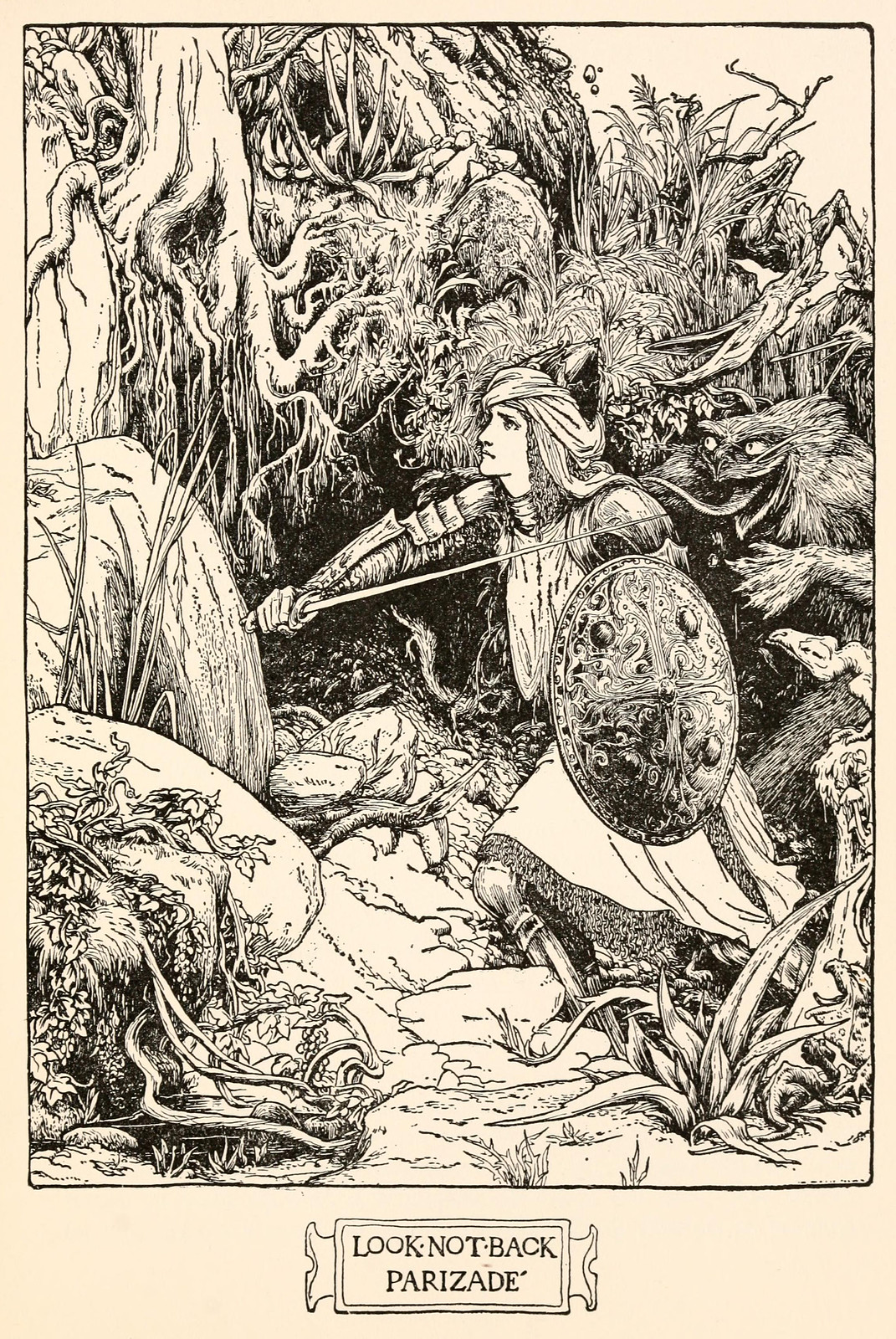 Illustration from The Story Of THe Speaking Bird, "Fairy Tales From The Arabian Nights," 1915
Illustration from The Story Of THe Speaking Bird, "Fairy Tales From The Arabian Nights," 1915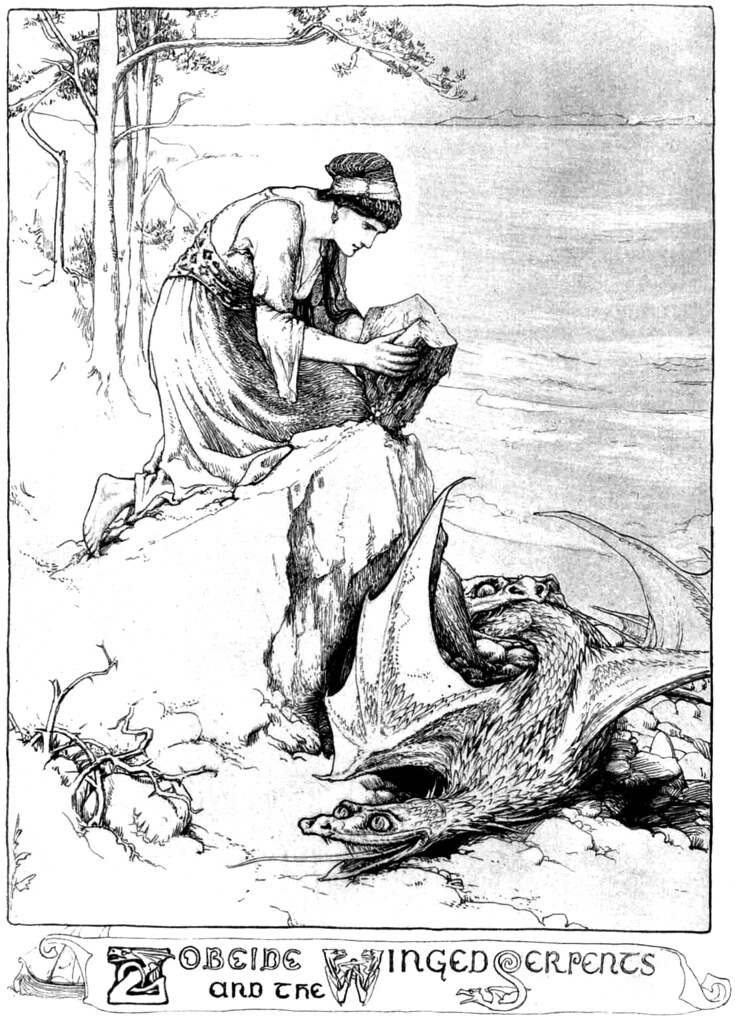 Illustration from The Story Of Zobeide Told By Herself, "Fairy Tales From The Arabian Nights," 1915
Illustration from The Story Of Zobeide Told By Herself, "Fairy Tales From The Arabian Nights," 1915 The Prince Wants His Lunch, Illustration from "Europa's Fairy Book," 1916
The Prince Wants His Lunch, Illustration from "Europa's Fairy Book," 1916 The Sprightly Tailor, illustration from "Celtic Fairy Tales," 1892
The Sprightly Tailor, illustration from "Celtic Fairy Tales," 1892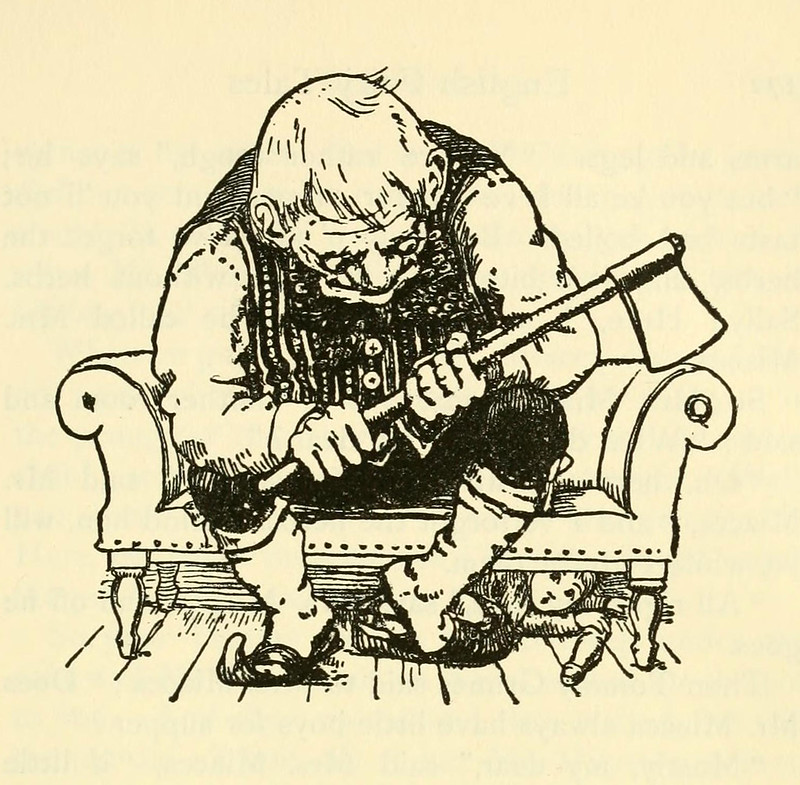 Mr Miacca, illustration from "English Fairy Tales," 1902
Mr Miacca, illustration from "English Fairy Tales," 1902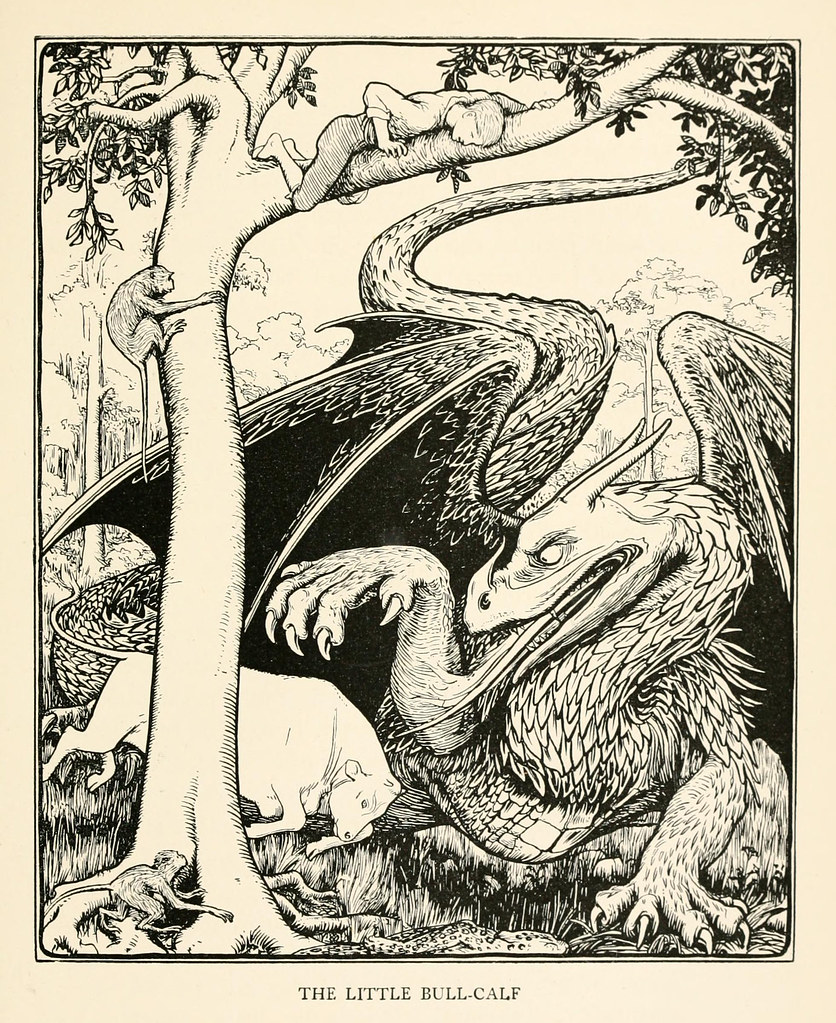 The Little Bull-Calf, illustration from "More English Fairy Tales," 1894
The Little Bull-Calf, illustration from "More English Fairy Tales," 1894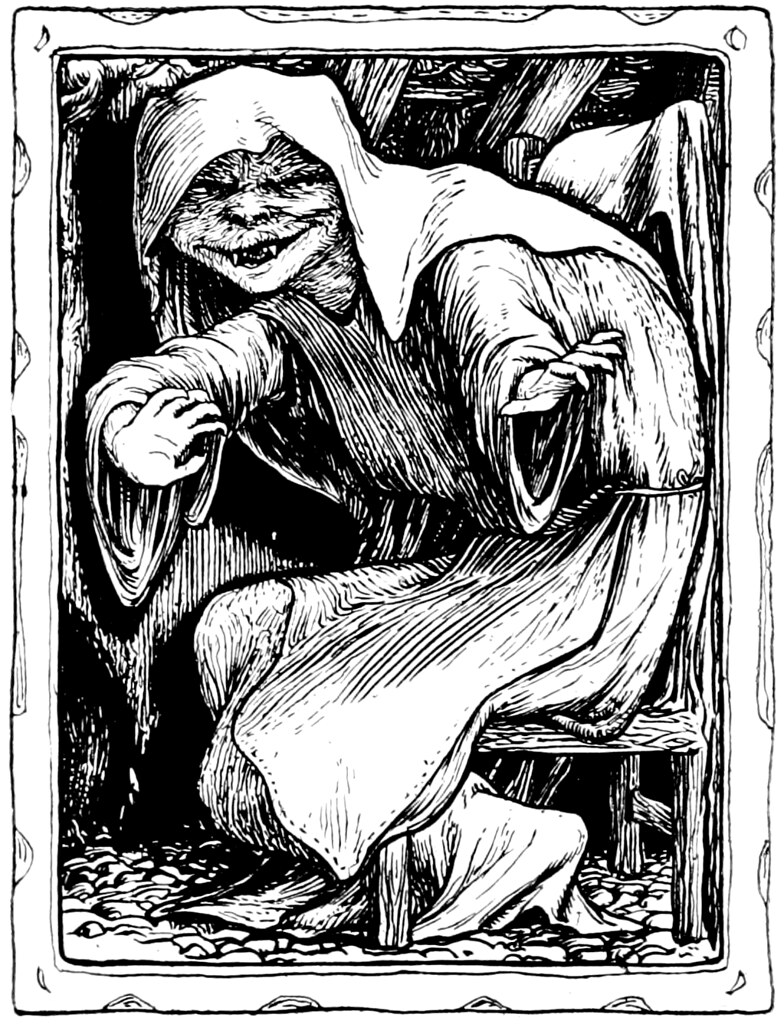 Illustration from "More Celtic Fairy Tales," 1892
Illustration from "More Celtic Fairy Tales," 1892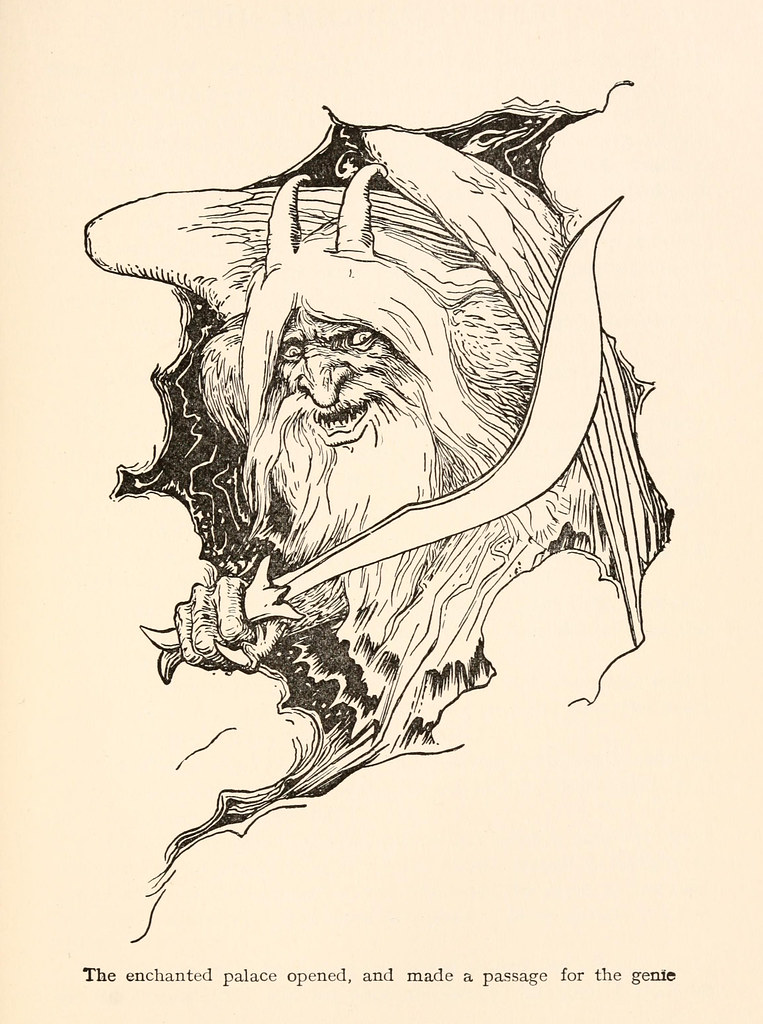 Illustration from The Story Of The King's Son, "Fairy Tales From The Arabian Nights," 1915
Illustration from The Story Of The King's Son, "Fairy Tales From The Arabian Nights," 1915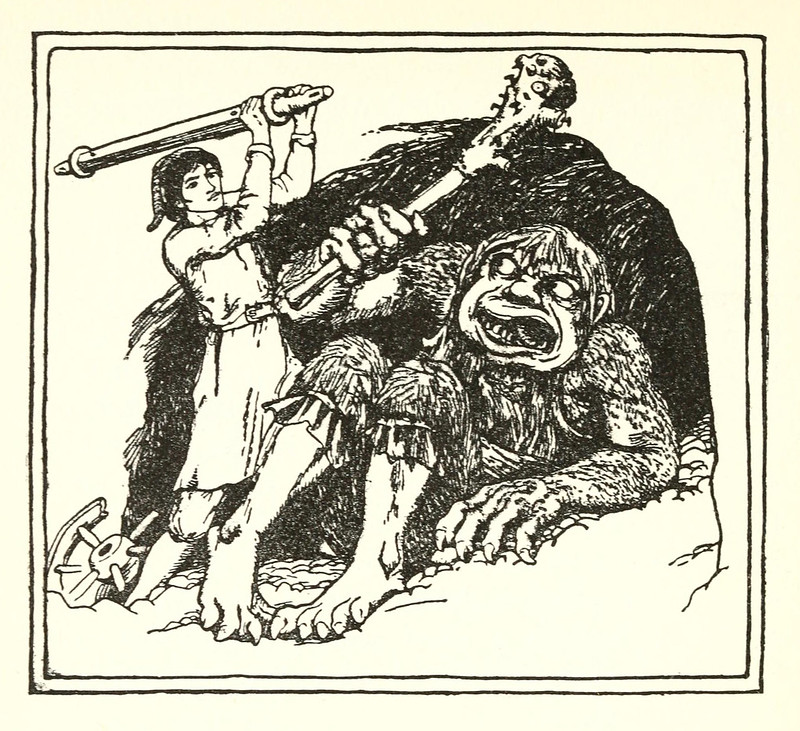 Tom Hickathrift, illustration from "More English Fairy Tales," 1894
Tom Hickathrift, illustration from "More English Fairy Tales," 1894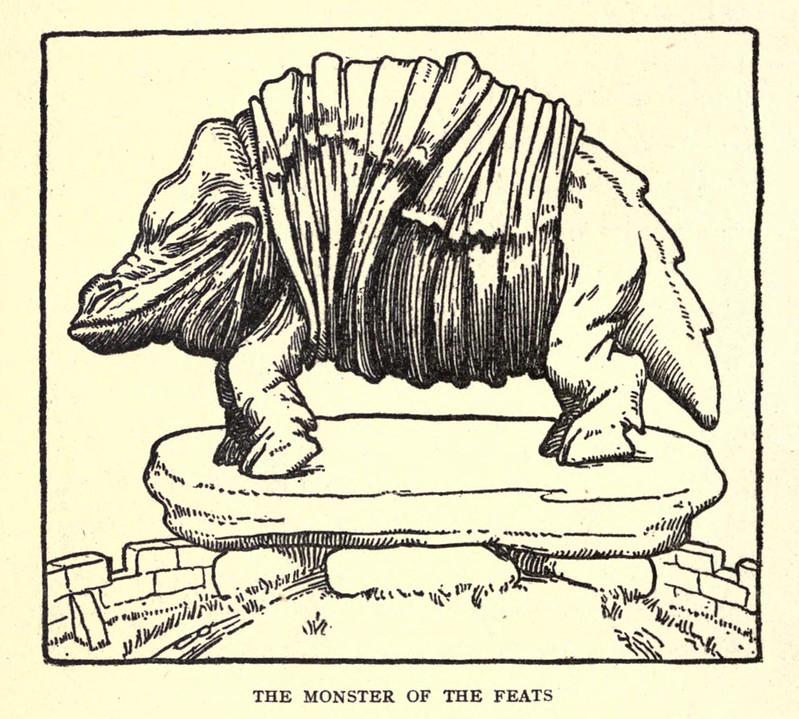 The Monster Of The Feats, Illustration from "The Book Of Wonder Voyages," 1919
The Monster Of The Feats, Illustration from "The Book Of Wonder Voyages," 1919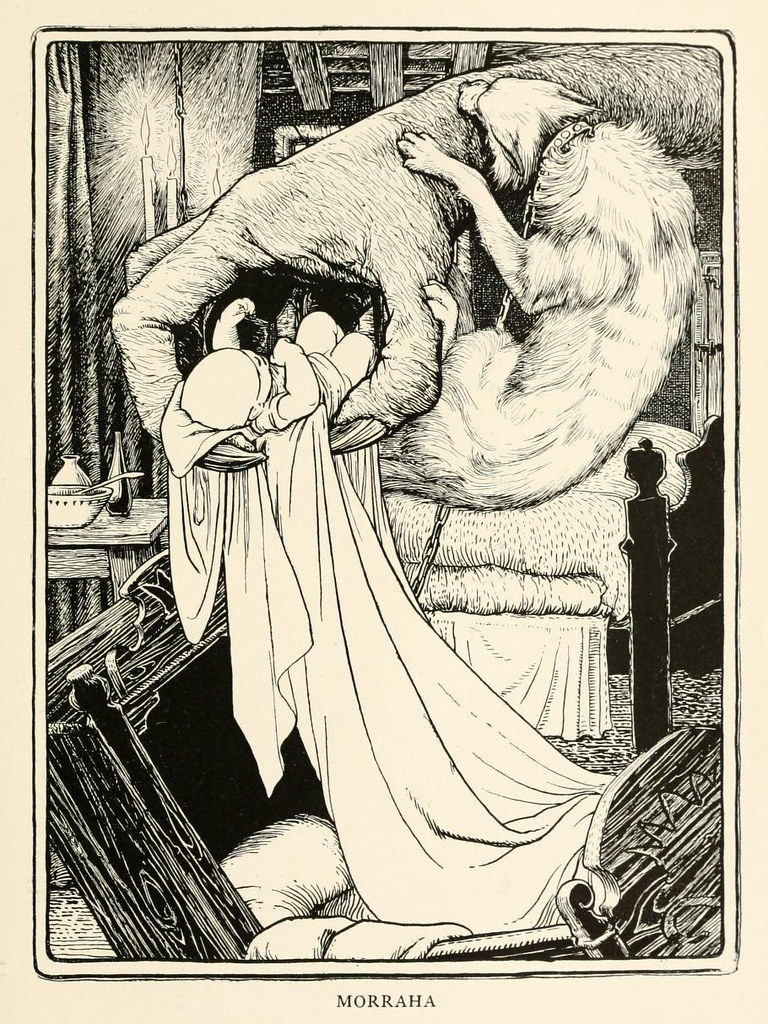 Morraha, illustration from "More Celtic Fairy Tales," 1892
Morraha, illustration from "More Celtic Fairy Tales," 1892 Illustration from Page 12 of "More English Fairy Tales," 1894
Illustration from Page 12 of "More English Fairy Tales," 1894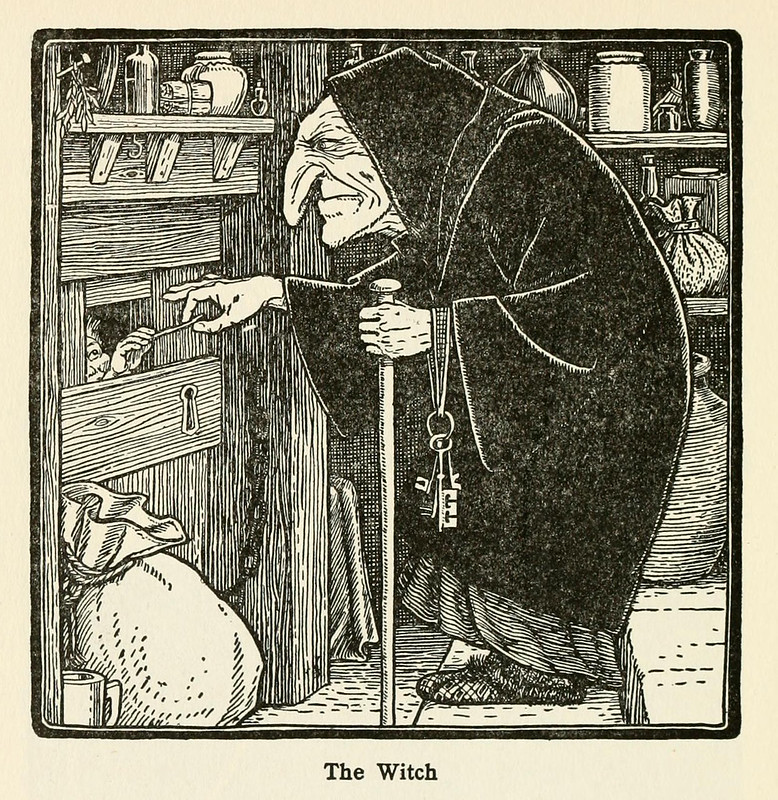 The Witch, Illustration from "Europa's Fairy Book," 1916
The Witch, Illustration from "Europa's Fairy Book," 1916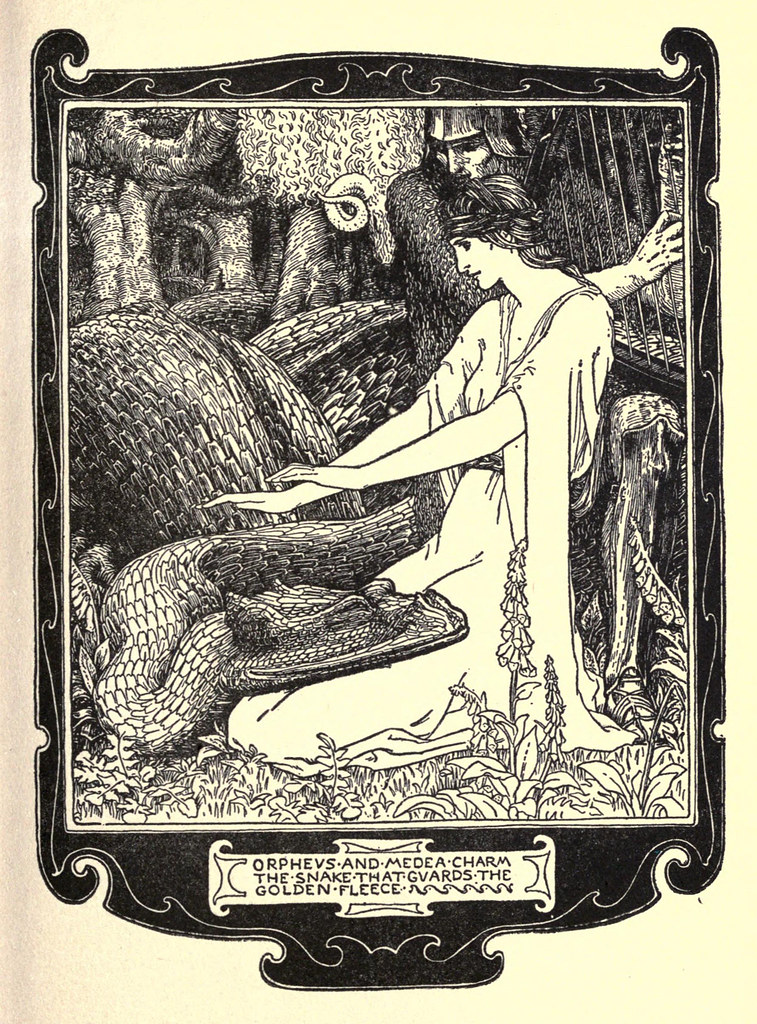 Orpheus And Medea Charm The Snake That Guards The Golden Fleece, Illustration from "The Book Of Wonder Voyages," 1919
Orpheus And Medea Charm The Snake That Guards The Golden Fleece, Illustration from "The Book Of Wonder Voyages," 1919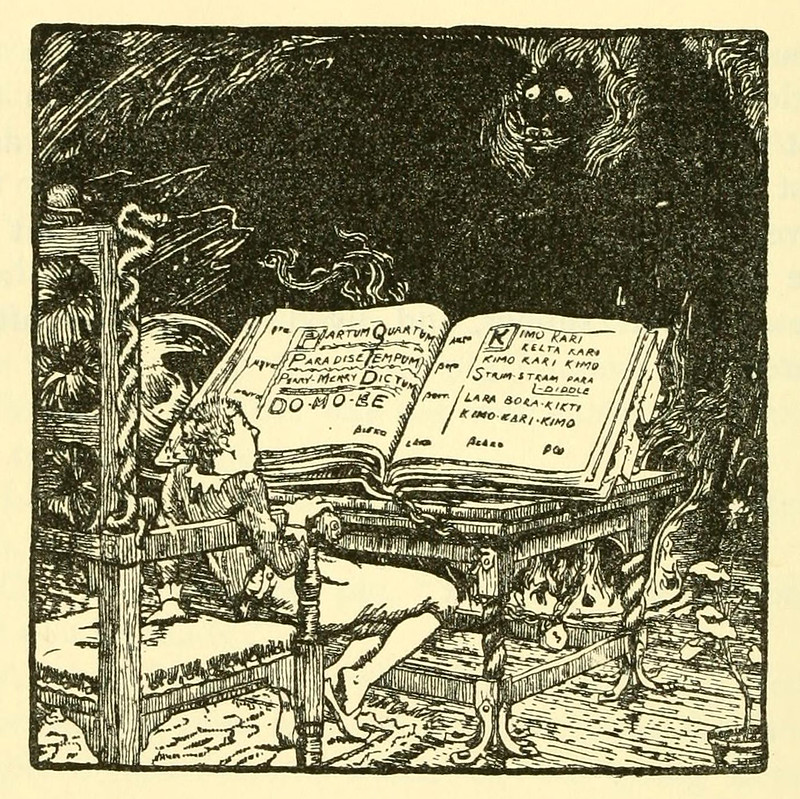 The Master And His Pupil, English Fairy Tales, 1902
The Master And His Pupil, English Fairy Tales, 1902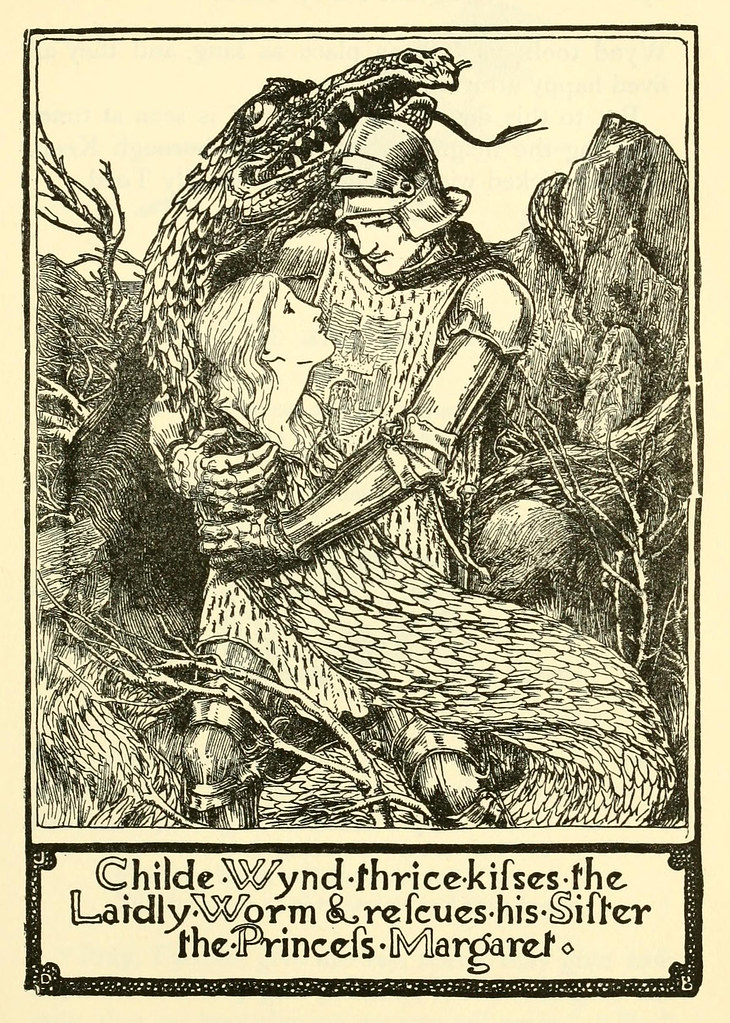 Illustration from "English Fairy Tales," 1902
Illustration from "English Fairy Tales," 1902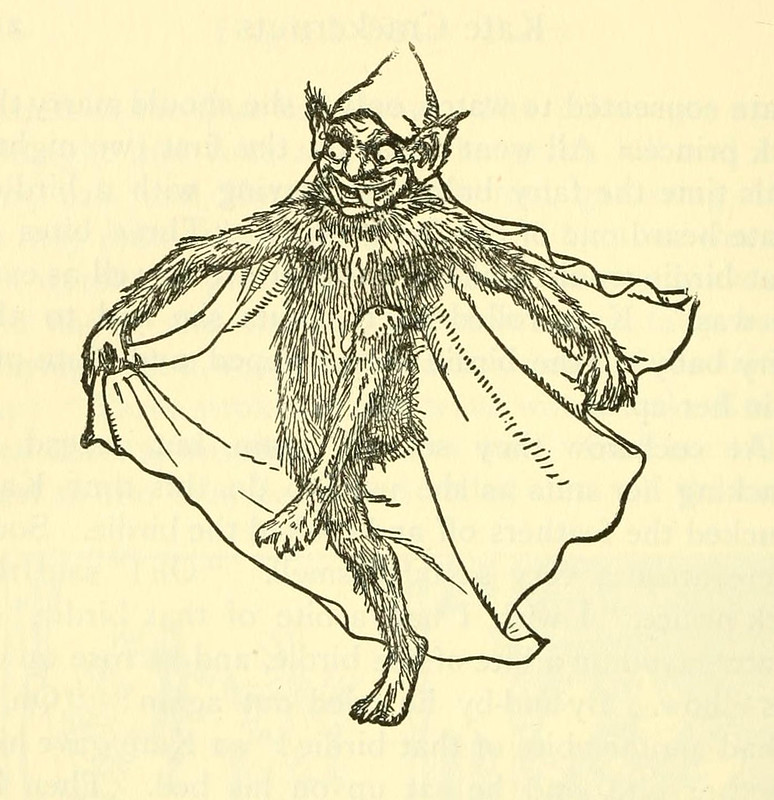 The Cauld Lad Of Hilton, illustration from "English Fairy Tales," 1902
The Cauld Lad Of Hilton, illustration from "English Fairy Tales," 1902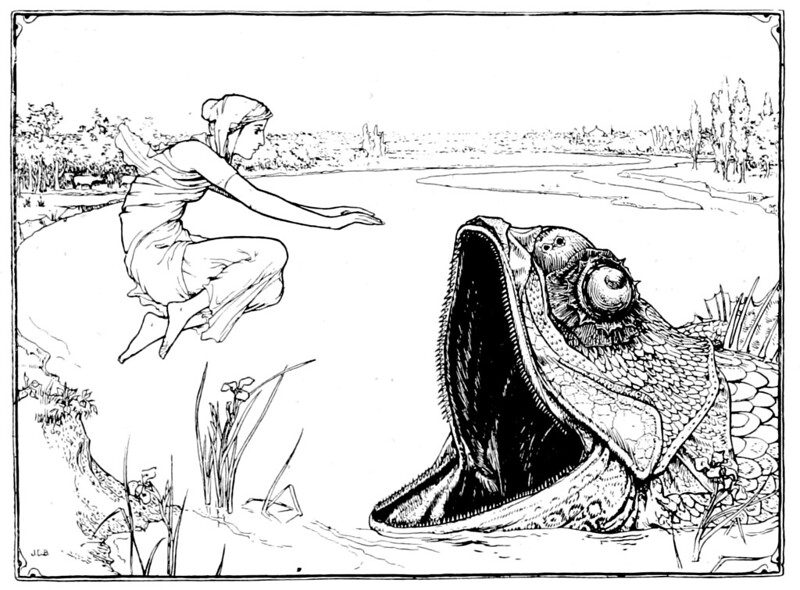 Second Illustration from "Indian Fairy Tales," 1892
Second Illustration from "Indian Fairy Tales," 1892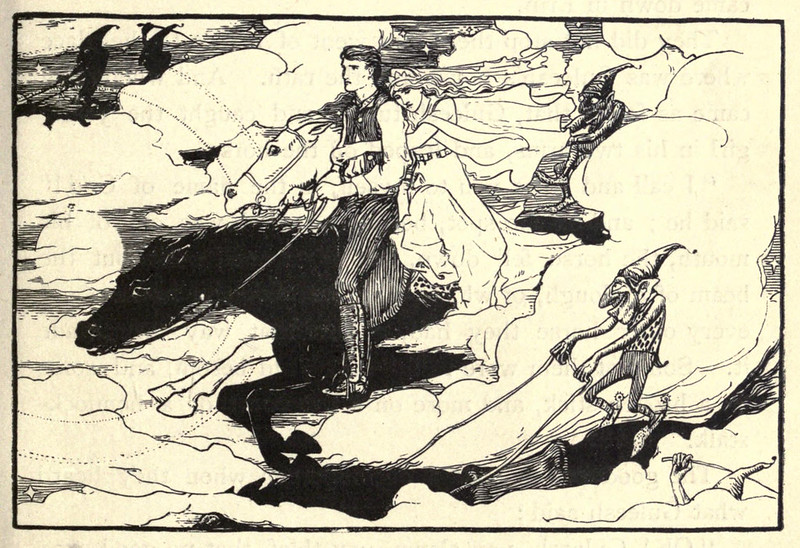 Guleesh, illustration from "Celtic Fairy Tales," 1892
Guleesh, illustration from "Celtic Fairy Tales," 1892 The Giant Tries To Drink The Stream, Illustration from "Europa's Fairy Book," 1916
The Giant Tries To Drink The Stream, Illustration from "Europa's Fairy Book," 1916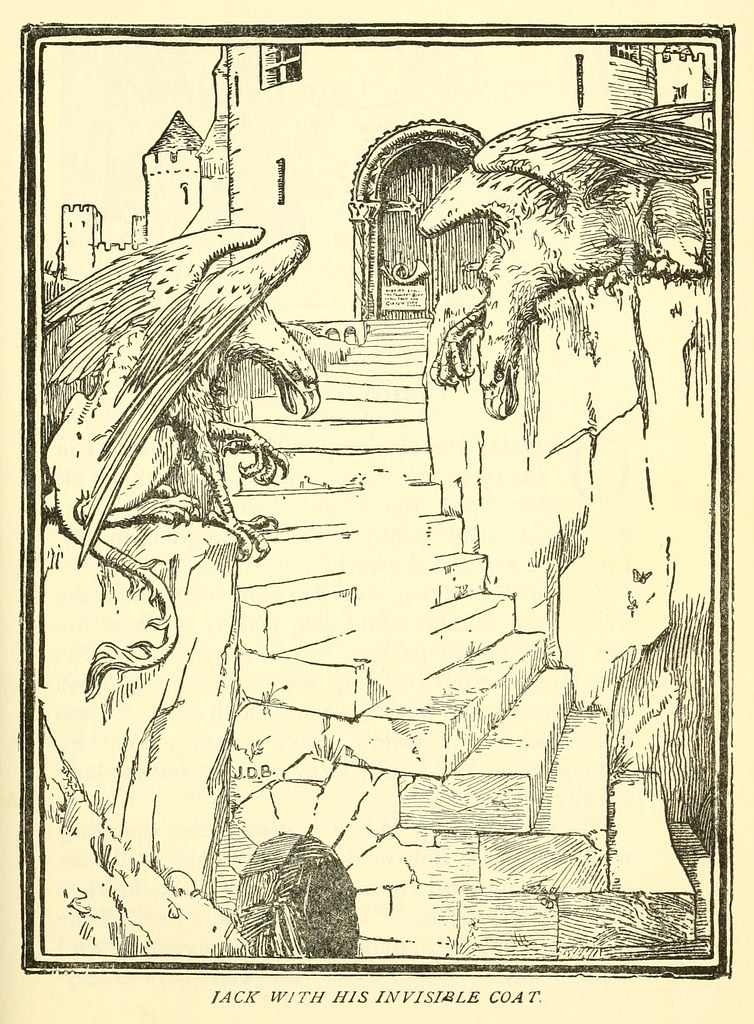 Jack With His Invisible Coat, illustration from "English Fairy Tales," 1902
Jack With His Invisible Coat, illustration from "English Fairy Tales," 1902 Illustration from "Indian Fairy Tales," 1892
Illustration from "Indian Fairy Tales," 1892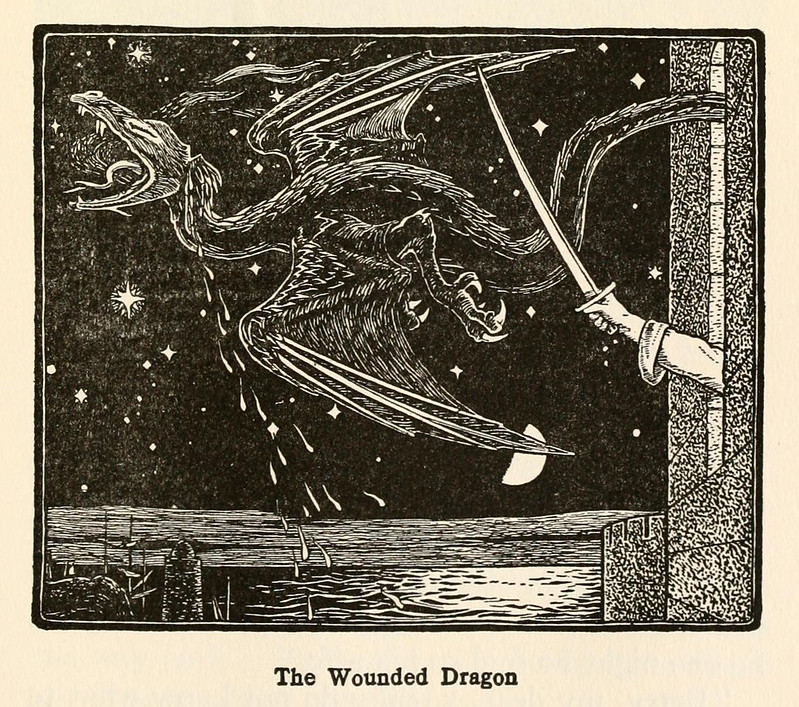 The Wounded Dragon, Illustration from "Europa's Fairy Book," 1916
The Wounded Dragon, Illustration from "Europa's Fairy Book," 1916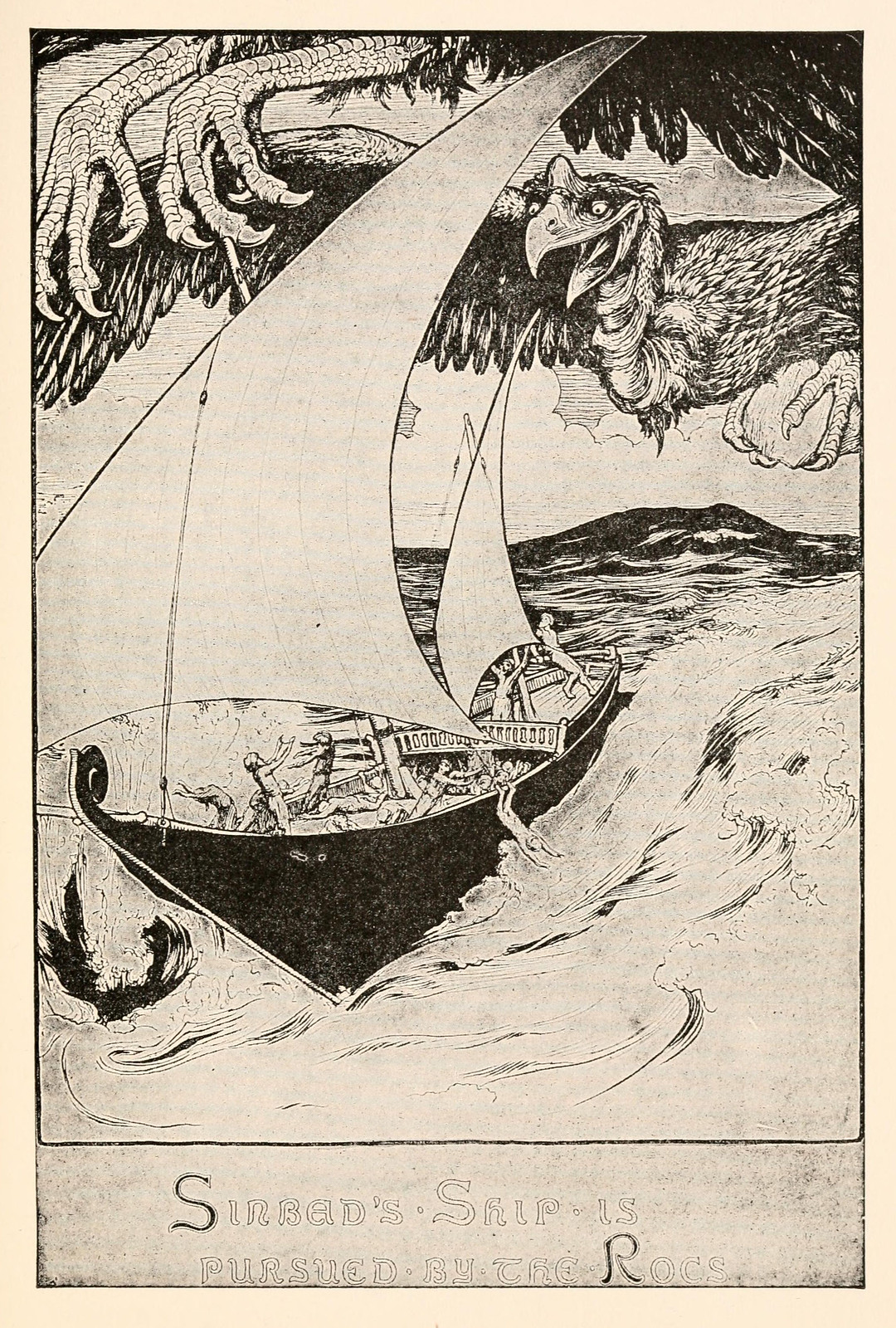 Illustration from The Fifth Voyage Of Sinbad The Sailor, "Fairy Tales From The Arabian Nights," 1915
Illustration from The Fifth Voyage Of Sinbad The Sailor, "Fairy Tales From The Arabian Nights," 1915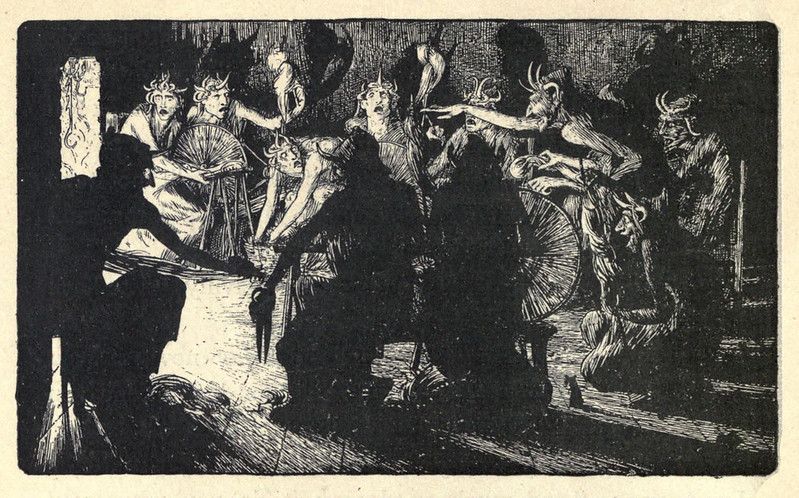 The Horned Women, illustration from "Celtic Fairy Tales," 1892
The Horned Women, illustration from "Celtic Fairy Tales," 1892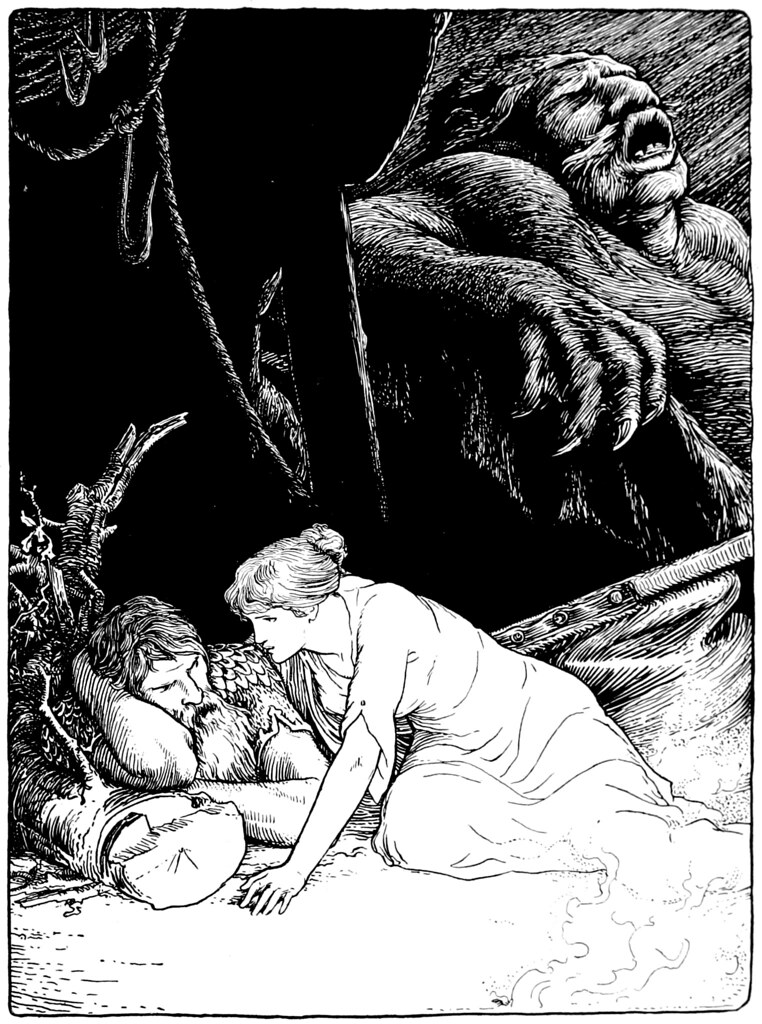 Third illustration from "More Celtic Fairy Tales," 1892
Third illustration from "More Celtic Fairy Tales," 1892"John Dickson Batten (8 October 1860 – 5 August 1932), born in Plymouth, Devon, was a British painter of figures in oils, tempera and fresco and a book illustrator and printmaker. He was an active member of the Society of Painters in Tempera, with his wife Mary Batten, a gilder.
As a student at the Slade School of Fine Arts under Alphonse Legros he exhibited until 1887 at the Grosvenor Gallery with Sir Edward Burne-Jones. He indulged in mythological and allegorical themes. Among Batten's paintings are The Garden of Adonis: Amoretta and Time, The Family, Mother and Child, Sleeping Beauty: The Princess Pricks Her Finger, Snow White and the Seven Dwarves, and Atalanta and Melanion.
In the 1890s, he illustrated a series of fairy tale books by Joseph Jacobs who was a member of the Folklore Society, notably English Fairy Tales (1890), Celtic Fairy Tales (1892 anthology), More Celtic Fairy Tales (1894) and More English Fairy Tales (1894). Then they turned to fairy tales collected from continental Europe : Indian Fairy Tales (1912), European Folk and Fairy Tales (also known as Europa's Fairy Book) (1916). He also illustrated English versions of Tales from the Arabian Nights and Dante's Inferno.
At the end of the 1890s he turned to the painting technique of egg tempera and played an important part in its revival with Birmingham artists such as Arthur Gaskin. He served as a Secretary to the Society of Painters in Tempera and published in 1922 an article on The Practice of Tempera Painting." - quote source
You can view the complete books from which the above artworks were found at archive.org

1 comment:
These are wonderful
Post a Comment